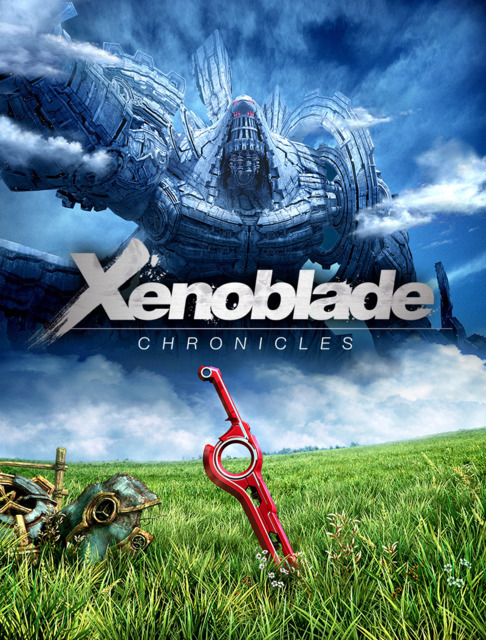Great ideas, shaky execution
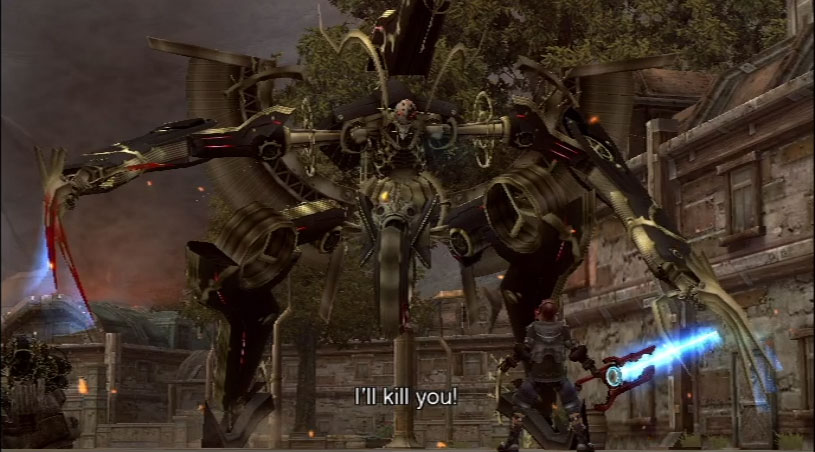
NOTE: Some of the screenshots used in my review may not be from the 3DS version of the game.
Xenoblade Chronicles 3D takes place in a world where all life lives on two giant beings: the Bionis and the Mechonis. The inhabitants of these two beings (the Homs and Mechon, respectively) are in constant conflict, trying to destroy each other in hopes of ending the ceaseless fighting and attaining peace. The Homs are outmatched but have one ace-in-the-hole: the Monado, a powerful blade that can actually pierce Mechon armor and gives its wielder amazing powers. With this blade, they manage to find some level of peace. Years after a pivotal battle, a young man named Shulk is studying the Monado in an attempt to better understand it. Suddenly, the Mechon attack his home, looking for the Monado, and force him to take up the blade and fight back. It isn’t enough: several townspeople and his best friend are slain, and he vows to track down the faced Mechon who led the attack and get his revenge. Along with his goofy friend Reyn, Shulk must travel across the Bionis and learn the truth behind the Homs-Mechon conflict and the true nature of the Monado.
The story of Xenoblade Chronicles takes awhile to find its stride. After the events that start your party on its quest, the story stagnates for quite some time. You have your main goal--revenge on the being that attacked your colony--but very little progress is made towards that goal. Instead, you just constantly press forward, trying to reach the location where things are promised to be made clear. Events happen and your party grows, but many of these moments feel unimportant when compared alongside the main narrative. The theme of revenge keeps costing the party, with each new member getting roped in by Shulk’s undying hatred for the Mechon. After around twenty hours or so of this, I was about ready to give up on the game. Luckily, this was also the point I reached that narrative landmark, and it was well worth the wait: a new villain is introduced, tons of fascinating questions arise that I needed to see answered, and you are given a much better reason to continue forward in your quest. From then on, the pacing is also much better, with crucial and interesting moments happening on a more regular basis, including some fantastic twists that I didn’t see coming. This was the point of time where I couldn’t put the game down, pushing ever onward to see what was going to happen next.
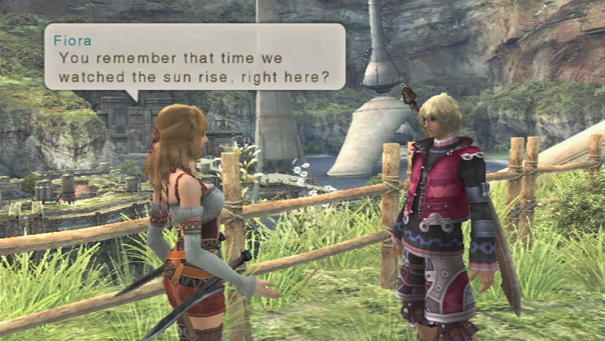
While this intrigue does manage to persist all the way until the very end of the game, it also adds in some unfortunate cliche elements in the last ten hours or so. The “true” villain of the game is introduced, character motivations get a bit sillier, predictable twists are much too proud of themselves, and everything starts to be a little too convenient. The real final goal of your party is possibly the worst change, as it goes from a unique twist on JRPG tropes to just embodying those tropes in the laziest way possible. It all culminates with an ending that I feel I’ve seen countless times in this genre, an unfitting end especially when compared to the tone of the rest of the game. Once again, I found myself asking why so many Japanese developers start with a neat idea and then end up in the exact same place as other JRPGs. While I do feel that the stunning storytelling moments throughout the middle of the game aren’t ruined by this ending, it caps off the entire thing in a way that just fell flat to me. In the end, I enjoyed the journey much more than the destination.
I also liked the characters of Xenoblade Chronicles, particularly your party members. While these characters do embody some of the tropes that JRPG fans love to hate, each character manages to step outside their bonds of predictability. There are plenty of obvious anime moments to be had, sure, but I also felt a great deal of affection and sympathy for each character in the party. The voice acting helped with that, a fully British voice cast that brings gravitas to the game’s setting and manages to stand out in a genre packed with cringeworthy performances. In addition there’s a focus on character relationships. You build affinity for both NPCs and party members, earning new benefits with each additional rank. Affinity with NPCs can unlock new quests, add shop items, and provide discounts for purchase. With party members, you can find places around the world called heart-to-heart locations where you can see an additional cutscene between two characters if their affinity is high enough. Unfortunately, you need to grind out affinity, or backtrack later on, in order to reach a level to view any of these. As such, I didn’t get to see any of them myself. Even without these events, I still enjoyed seeing my party grow more friendly with one another, even if most of those relationships don’t really pay off during your quest. It’s far from my favorite cast of JRPG characters, but it’s a solid party from start to finish.
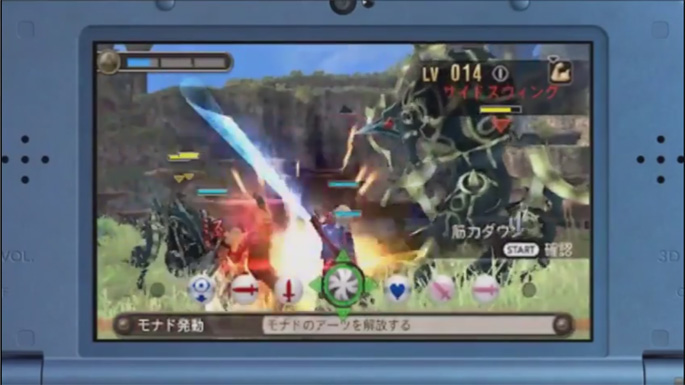
Gameplay in Xenoblade Chronicles most resembles an MMO, particularly in the combat and size of the worlds. You run around absolutely huge areas to move into new sections of the Bionis, find towns with new vendors and quests, or just go exploring. Obviously, the majority of gameplay consists of combat with your foes. Enemies populate the vast areas, minding their own business and only engaging in combat if you get too close or choose to engage them yourself. Everyone pulls out their weapons and the fight starts right there in the world. Combat has you controlling one character, with two other AI party members to assist at any given time. While your character auto-attacks if you are in range of the targeted enemy, there are also a slew of active abilities you can use at any time. These come with cooldowns, preventing you from spamming them. Free movement is possible at any time and actually is quite important. Certain abilities gain additional effects--slowing the enemy, increasing the damage they take, etc.--if you use them from a certain side of the foe. There is a topple mechanic that allows you to knock enemies off their feet for additional damage, resembling FFXIII’s Stagger mechanic. Also similar to MMOs is the notion of threat, with certain moves causing more aggro (for tanky characters to take the brunt of the damage) or reducing the threat you cause (for damage dealers/healers). Each character has their own special move that builds up naturally through combat, usually suited to that character’s role. Finally, there is a party gauge that can be used to revive fallen companions, prevent future actions from coming to pass (more on that below), or for devastating Chain Attacks. Each successful fight gives experience, points to spend on upgrading abilities, and progress into the talent trees that each character has. All in all, it’s a complicated but manageable system.
There’s a lot of things to like about the combat system here. One of my favorite things is how Shulk has the ability to see the future and can predict certain harmful attacks that will be coming soon. This gives you the opportunity to throw a heal towards a person who is about to be killed or topple the enemy to prevent the attack entirely. In later fights, particularly boss encounters, it can be a lot of fun deciding how to best push back against the impending danger, as you get a lot more options to counter moves such as these. Making use of the positioning is also exciting, keeping you moving frequently around the enemy to maximize damage and potential debuffs. I chose to play as Shulk for the entirety of the game (although you can choose to play as any character during nearly every encounter), mostly because he had a good mix of positional skills to work with; I could step to the side to slow and lower a foe’s defense before moving to its back for a savage backstab attack. Whenever Reyn, my tank, knocked a foe to the ground, I could use another attack to Daze the target, keeping it stunned for a longer period of time. This system is creative (almost an expansion on FFXII and FFXIII’s combat) and has a lot of potential.
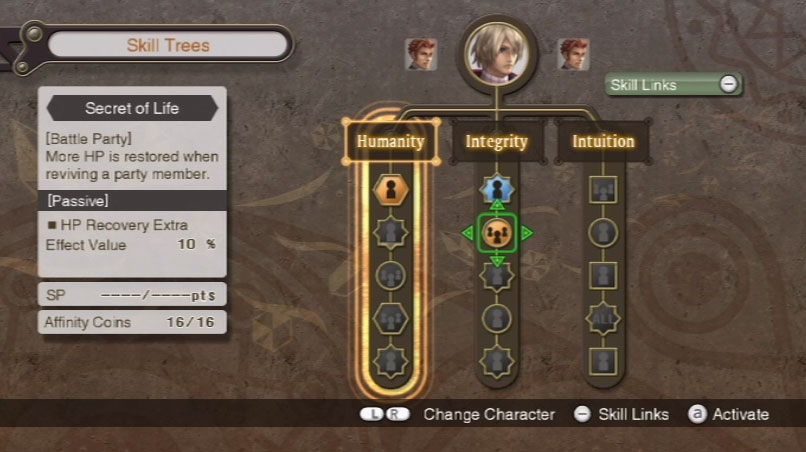
Unfortunately, it also comes with a few issues. First, combat can take a long time, even against minor foes. While combat is engaging against foes that force you to strategize and counter certain moves, the easy enemies that don’t require strategy at all are boring to fight. Considering the fact that most of the enemies in this game are simple to defeat, there can be quite a bit of tedium, particularly when grinding is necessary. Second, your AI companions can be remarkably stupid. You have some basic commands--attack my target, come to me, and attack at will--but they didn’t seem to work at certain times during my playthrough, not unless I hammered on them for several seconds. Also, my tank would frequently position foes in terrible places, such as in a pool of acid that is eating away at his health or pushed up against a wall so that I couldn’t get behind it. This wasn’t a concern for the most part, but those situations where it occurred made the encounter more difficult than it needed to be. My final complaint, and this is a bit of a nitpicky thing to note, has to do with a certain kind of enemy: the Mechon. Due to the strength of the Mechon’s armor, your companions cannot damage them by default. Whenever you fight Mechon, it is necessary to use a special buff called Enchant (via Shulk and only Shulk) to ensure they can actually harm the foes. This buff only lasts a certain amount of time and falls off automatically when you leave combat. In areas where you fight nothing but Mechon, of which there are quite a few in the game’s last third, it can be annoying to have to cast it for each and every fight you get into. It’s maybe not that big of a deal for most players, but it really got to me after a period of time, making the mechanic feel like nothing more than an important story element that didn’t add anything to the gameplay. While I wouldn’t call these issues minor, at least not as a whole, they don’t entirely take away from a clever combat system.
Before I move on, I also wanted to talk about the level requirements in Xenoblade Chronicles. This game uses a system where even a few levels of difference between you and your foe make a huge impact, causing your characters to miss more attacks and take more damage. Five levels of difference, making the enemy con as red, make it nearly impossible to even touch the foe, guaranteeing death or immense frustration. As such, it is important to keep your level up as you progress through the game. There are plenty of side quests to do, but I found these to be extremely boring. After a few hours, I chose to not go out of my way to complete any of them. Instead, I chose to fight a decent number of enemies in my path to stay leveled as I progressed, doing the occasional side quest along the way. This worked perfectly for a long time, keeping me right where I needed to be. At a certain point, however, the level requirement for an area jumped up by an insane degree, pretty much forcing me to grind for about three hours to even stand a chance against the bosses to come. For the rest of the game from that point, I had to grind on a regular basis--not just fight enemies in my way--to stay in line with the necessary level range for the main story content.
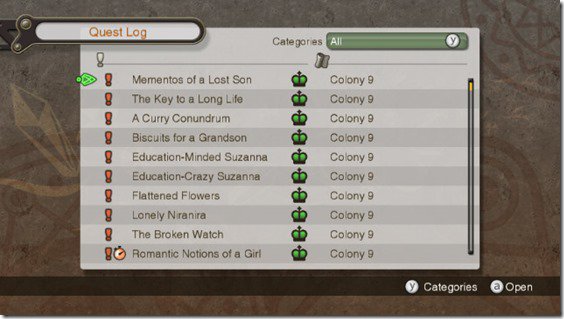
I experienced a lot of grief from this absurd design choice. While I can understand balancing a game and wanting to entice players to level, the fact that even a minor difference in levels can drastically increase the difficulty of an encounter is crazy. This style of design demands you keep your characters leveled or face impossible battles that can’t be overcome through better strategy. I’ve never liked this type of design, punishing the players who simply haven’t fought enough. If my strategy is sound and I fight hard enough, I should still be able to win in situations like this; that just isn’t possible in Xenoblade Chronicles if your level is too far off from your foe. As I see it, this means you pretty much have two options when playing through the game: do as many side quests as you can or skip most of the side quests and choose to grind at certain points (as I did). Both seem like padding the game’s length on the developer’s part (and are likely why people advertise this game as taking 80+ hours, even though I finished it in around 50) and could have been avoided. There’s still a great experience to be had here, but you may want to avoid this game if you dislike grinding in your RPGs.
Audiovisually, Xenoblade Chronicles is a real treat. The character design of your party members is fantastic, each managing to stand out in memorable ways even with the muddy fidelity. Armor and weapons share a bunch of models, but those models are sharply designed from beginning to end. Most notable, however, is the sheer scope of the areas of the game. This applies both to the visual design and the real estate that you can physically traverse. While it’s impressive to witness each area’s hugeness, this also adds a great deal of walking to your playtime, particularly with the rather slow movement speed. Again, this can feel like unnecessary padding; whether or not the scale makes the game inherently better is really up to personal preference. Musically, Xenoblade Chronicles also stands out. There are a multitude of fantastic tracks to be heard across the game, with each area bringing a great new song to go along with it. I particularly enjoyed the recurring theme that played over many of the game’s important cutscene moments, inspiring and somber at the same time. My one complaint is that main battle theme is a bit uninteresting for being heard so often. The rest of the soundtrack, however, is absolutely phenomenal.
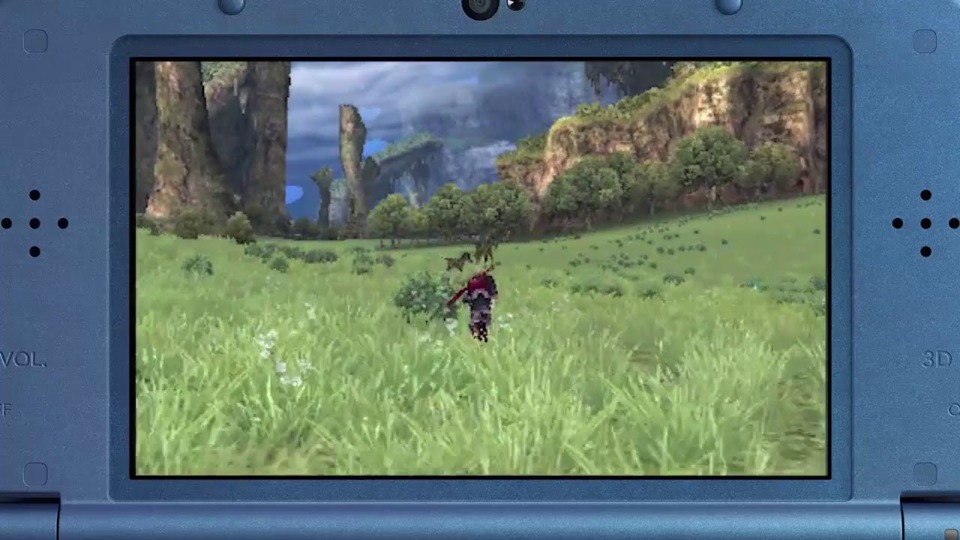
As this version of the game is a port, it’s worth talking about the platform-specific issues I had. Most notably, the graphics suffer a bit in their downscaling to a portable platform. Textures look even muddier than their Wii counterparts, and the text can be a bit hard to read at times. For the most part, the framerate manages to hold up as you explore the massive worlds. There are some occasions, particularly in combat with a bunch of foes, where it can seize up for a few seconds. This usually doesn’t look jittery or slow, but it prevents the game from accepting your inputs as quickly as you might expect. These instances are few in number and never affect your ability to handle situations effectively, so it’s merely a small quirk to note. The 3D looked strange to my eye, with a fuzzy band always appearing a few feet in front of my character. It does add depth to the game, but this strange graphical bug distracted me enough to keep it off for nearly the entire game. My final complaint has to do with the system’s small size, particularly regarding the controls. This game tasks you with using both the d-pad and the slide pad (one for movement and one for menu selection) and frequent use of the triggers to choose targets. During lengthy play sessions, this cramped up my (fairly small) hands quite a bit. It’s tolerable but this system obviously isn’t the best place to play a 50+ hour game if you have other options. None of these issues completely break the experience, but I still might say that the Wii version (or Dolphin, obviously) is a better experience overall.
Personally, I think that Xenoblade Chronicles 3D got a bit more attention than it deserved. While it did manage to return to the scope and length that many love, there are a multitude of issues to be found as well. The plot manages to find its stride eventually, yet it squanders what it has with cliched tropes and predictable twists at its finale. The combat system stands out in a rather bland genre for gameplay, but some balancing problems and a host of small quirks could have used a bit of refinement. Its breathtaking scope is balanced with an unfortunate amount of tedium and repetition that comes with such huge areas. Maybe it was the hype for this game, but I don’t understand why this game is so revered. Don’t get me wrong; I really enjoyed playing through Xenoblade Chronicles. Parts of the story are well-written and worth seeing, and the base ideas of the combat system are something I’d like to see in another game. Those problems I had with it just got under my skin, though, making it a much harder game to love as a result. If anything, I can’t wait to see what the developers do with the sequel; if they can fix some of my bigger issues, that game could be truly memorable.
